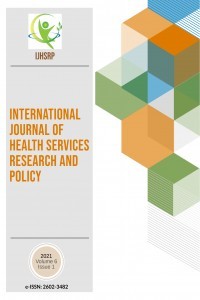COMPARATIVE ESSENTIAL OIL COMPOSITION OF AERIAL PARTS OF MICROMERIA PERSICA POPULATIONS FROM FOUR REGIONS IN FARS PROVINCE, IRAN
COMPARATIVE ESSENTIAL OIL COMPOSITION OF AERIAL PARTS OF MICROMERIA PERSICA POPULATIONS FROM FOUR REGIONS IN FARS PROVINCE, IRAN
There are three species of the Micromeria plant in Iran, one of which is Micromeria persica. Different species of Micromeria has been used in traditional medicine. The current study deals with identifying chemical compounds of Micromeria persica populations in four regions of Fars province in Iran. These regions are Kuh-e Zireh, Firuzabad, Bezyn defile in Darab and Ghir to Firuzabad. First, the aerial parts of Micromeria persica collected as samples were dried. Then, the essence of the dried samples was extracted by water distillation in the Clevenger machine, and identification of compounds was made using the GC/MS machine. In Kuh-e Zireh, Firuzabad, Bezyn defile in Darab and Ghir to Firuzabad regions, the numbers of recognized compounds were 30, 45, 50 and 25 respectively. The main essence compounds of the four examined populations were Germacrene D, Bicyclogermacrene, spathulenol, and δ-cadinene. Geographical position and ecological parameters of habitat, such as height, annual rainfall, and climate, can change the quality and quantity of the essential oil’s compounds in Micromeria persica.
___
- [1] Mozaffarian, V., A Dictionary of Iranian Plant Names, Farhange Moaser Publishers., Tehran, Iran, 1996
- [2] Rechinger, K.H., Micromeria, Hymenocrater, Scutellaria, in: Flora Iranica, Labiatae. No. 150. Edits., Rechinger, K.H., Hedge, I.C., Akademische Druck und Verlagsanstalt,, Graz, Austria, 1982, pp. 509, 239, 597
- [3] Güllüce, M., et al., Biological activities of the essential oil and methanolic extract of Micromeria fruticosa (L.) Druce ssp. serpyllifolia (Bieb.) PH Davis plants from the eastern Anatolia region of Turkey, J Sci Food Agric, 84 (2004), 7, pp. 735-741.
- [4] Ali-Shtayeh, MS., et al., Antimicrobial activity of Micromeria nervosa from the Palestinian Area, J Ethnopharmacol, 58 (1997), 3, pp. 143-147.
- [5] Kirimer, N., Başer, KHC., Essential oils of Micromeria species, Proceedings of the 11th International Symposium on Plant Originated Crude Drugs, Ankara, Turkey, 1996, May, pp. 22-24
- [6] Öztürk, M., et al., Antioxidant and anticholinesterase active constituents from Micromeria cilicica by radical-scavenging activity-guided fractionation, Food Chem, 126 (2011), 1, pp. 31-38.
- [7] Stojanović, G., Palić, I., Antimicrobial and antioxidant activity of Micromeria bentham species, Curr Pharm Design, 29 (2008), 14, pp. 3196-3202.
- [8] Vladimir-Kneževic, S., et al., Antioxidant activities and polyphenolic contents of three selected Micromeria species from Croatia, Molecules, 16 (2011), 2, pp. 1454-1470. [9] Rivera, N., Obón de Castro, c., The ethnobotany of Old Word Labiatae. In Advances in Labiatae Science. Edits., Harley, R.M., Reynolds, T., Royal Botanic Gardens, Kew, London, UK, 1992, pp. 437–454
- [10] Sefidkon, F., Kalvandi, R., Chemical composition of the essential oil of Micromeria persica Boiss. from Iran, Flavour Fragr. J., 20 (2005), pp. 539-541.
- [11] Masoudi, Sh., et al., Volatile Constituents of Micromeria persica Boiss., Hymenocrater platystegius Rech. f. and Scutellaria pinnatifida A. Hamilt. subsp. pinnatifida, Three Labiatae Herbs Growing Wild in Iran, Journal of Essential Oil Research, 21 (2009)
- [12] Kazemizadeh, Z., et al., Chamical Composition of the Essential Oils of Two Populations Teucrium hyrcanicum L. in Two Different Localities, Journal of Medicinal Plants, 28, (2008), 4, pp. 87-93.
- [13] Ardakani, M. R., Evology, University of Tehran Press., Tehran, Iran, 2012 [in Persian Language]
- [14] Omidbeigi, R., Production and processing of medicinal plants, behnashr publisher., Mashhad, Iran, 2015. [in Persian language].
- Yayın Aralığı: Yılda 3 Sayı
- Başlangıç: 2016
- Yayıncı: Rojan GÜMÜŞ
Sayıdaki Diğer Makaleler
Elham NASER KAMJOO, Maryam NASER KAMJOO
NICOTINE DEPENDENCE LEVEL OF UNIVERSITY STUDENTS RELATING TO TYPE OF EDUCATION AND GENDER
Songül DOĞANAY, Ayla Eren ÖZDEMİR, Şeyma TRABZON
THE PREVALENCE OF TAS2R38 GENE PHENOTYPES AMONG THE PATIENTS WITH SOME ENDOCRINE SYSTEM DISORDERS
Rusudan KHUKHUNAİSHVİLİ, Marina KORİDZE, Sophiko TSKVİTİNİDZE, Nato ZOSİDZE, Marina NAGERVADZE, İrakli PARULAVA
INVESTIGATION OF THE EFFECT OF EXERCISE ON IRISIN HORMONE IN EXPERIMENTALLY INDUCED DIABETIC RATS
Hazal KÜÇÜKKARACA, Mehtap ÜNLÜ SÖĞÜT
